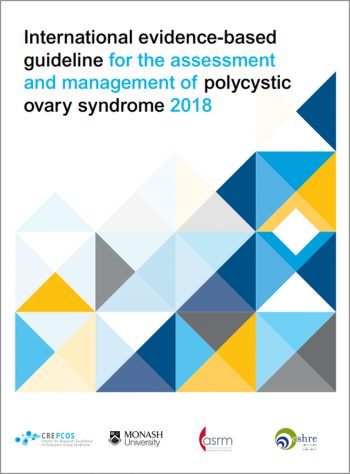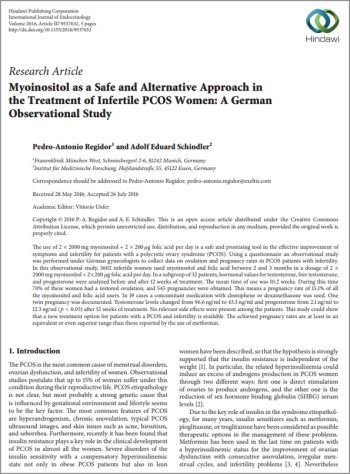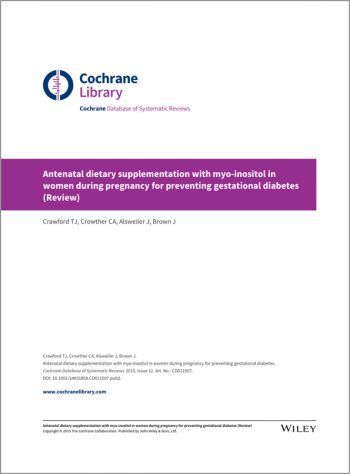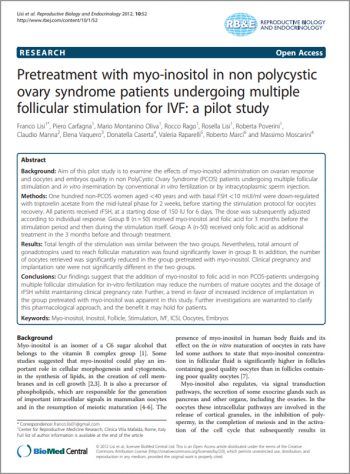International evidence-based guideline for the assessment and management of polycystic ovary syndrome 2018.
The guidline is an integration of current evidence and interdisciplinary clinical recommendations for the management of patients with PCOS.
The new guideline pays great attention to the section “Drug therapy for polycystic ovary syndrome”, and one of the recommended treatment options is the usage of inositol.
Myo-inositol in combination with folic acid significantly increases the frequency of ovulation and improves menstrual cycle, metabolic and hormonal parameters in women with PCOS.
Authors: Helena Teede, Marie Misso, Michael Costello, Anuja Dokras, Joop Laven, Lisa Moran, Terhi Piltonen and Robert Norman
Myo-inositol as a Safe and Alternative Approach in the Treatment of Infertile PCOS Women: A German Observational Study
The usage of 2 × 2000 mg myo-inositol + 2 × 200 g folic acid per day is a safe and promising tool for the effective improvement of symptoms and infertility in patients with a polycystic ovary syndrome (PCOS).
The study analyzed data from 3,602 patients with PCOS syndrome. Based on the data obtained, 2,520 women showed improvement in menstrual cycles towards ovulatory cycles. Among them, 545 women became pregnant. Pregnancy occurred after taking myo-inositol and folic acid for 2 to 3 months. This means that during the observational study, the percentage of women who became pregnant was 15.1%.
Authors: Pedro-Antonio Regidor, Adolf Eduard Schindler
Evaluation of safety and efficacy of dietary supplements with myo-inositol in women during pregnancy to prevent gestational diabetes (Review)
Data from four studies on the effects of dietary supplements with myo-inositol during pregnancy show their potential benefits in reducing the incidence of gestational diabetes.
Source: Cochrane Database of Systematic Reviews
Evaluation of pretreatment with myo-inositol in patients undergoing multiple stimulation of follicles for IVF: a pilot study
The usage of myo-inositol allowed to reduce the total number of gonadotropin, the number of used oocytes and to increase the number of cases of successful oocytes` implantation.
Authors: Lisi F., Carfagna P., Oliva MM., Rago R., Lisi R., Poverini R., Manna C., Vaquero E., Caserta D., Raparelli V., Marci R., Moscarini M.




